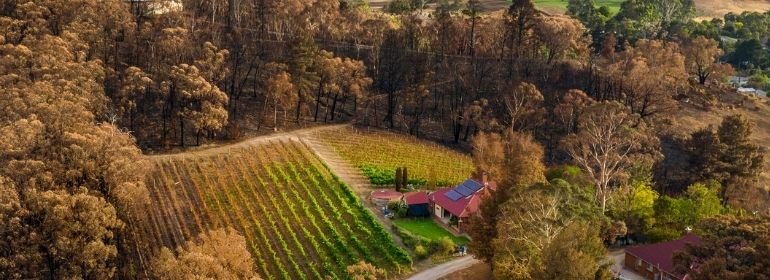2 November 2020
 Even if you’re living somewhere with no bushfire history, you can still be at risk. Make sure you’ve done everything in your power to prepare for whatever this summer has in store with these ten tips.
Even if you’re living somewhere with no bushfire history, you can still be at risk. Make sure you’ve done everything in your power to prepare for whatever this summer has in store with these ten tips.
1. Make sure you have the right level of insurance cover
Up to 40 per cent of people affected by last summer’s bushfires didn’t have enough insurance. Get your home valued at today’s rebuild costs – and make sure you include demolition and clearance, too.
2. Remember your outbuildings
Insurance can sometimes be complicated and there is more to consider than just insuring your home and contents. If you have sheds, outbuildings or other structures on your property, check with your local Elders Insurance Agent exactly what’s included in your policy and, more importantly, what’s not. Our agents are there to provide advice to ensure we have all your assets covered.
3. Make an inventory of your possessions
Go room by room, noting everything down with approximate values as well as taking pictures, if possible. Not only will this give you a good idea of your contents’ actual value, but you’ll also have a record of it too should you need it.
4. Tidy your roof!
Bushfires spread quickly, so don’t give them any unnecessary opportunities to take hold. Gutters and chimneys attract all manner of leaves and tree branches – all of which are flammable. Clear these out at least once every quarter to avoid embers sparking an unnecessary flame.
5. Cut back your trees
It’s best to cut tree branches back to at least 10m away from your home and trim back shrubs that are underneath as well.
6. Keep your grass short
Bushfires love longer grass, so cut your grass, brush and scrub so they’re no more than 10cm tall.
7. Spot check your home for gaps
Any small gaps in your roof or your subfloor are an open invitation for flying embers. Inspect your property and fill any gaps you find.
8. Download the app
Make sure you’ve downloaded your state’s fire app, which will provide live updates of fires within a certain radius of your property. Remember to allow notifications!
9. Have your survival plan in place
Bushfire survival plan templates are available from your State Government’s website, so make a copy and fill it in. Agree on what you’ll do and when with the other members of your household.
10. Have a bag packed, just in case
Bushfires travel very quickly, and if one took hold near your property, you might not have much time to think. Have an emergency bag packed and ready to go – and have any valuables that you may be tempted to stick around for handy, too.
Remember, if you have the right level of cover, your home and contents can be replaced. Human life cannot. If in danger, the advice is always to leave – the earlier the better.
For help creating a bushfire plan and more information and resources visit your state’s Emergency or Rural Fire services website: New South Wales, Queensland, Victoria, South Australia, Western Australia, Northern Territory, Australian Capital Territory, Tasmania.
To review your personal insurance and ensure you have the right level of cover tailored to your personal situation, contact your local Elders Insurance Agent today.
Download a copy of our Bushfire Season Checklist
and prepare your property for bushfire season.
This content is brought to you by Elders Insurance (Underwriting Agency) Pty Ltd, (ABN 56 138 879 026, AFSL 340965) (Elders Insurance) as a convenience to readers and is not intended to constitute advice (professional or otherwise) or recommendations upon which a reader may rely. Elders Insurance makes no warranty or guarantee about the accuracy, completeness, or adequacy of the content. Readers relying on any content do so at their own risk. It is the responsibility of the reader to evaluate the quality and accuracy of the content. Reference in this content (if any) to any specific product, process, or service, and links from this content to third party websites, do not constitute or imply an endorsement or recommendation by Elders Insurance and shall not be used for advertising or service/product endorsement purposes.